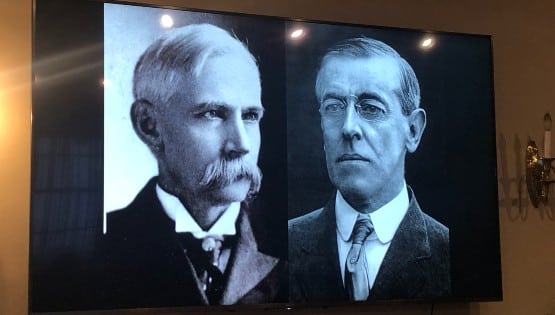
Boring, right? Five less seconds for the Cavs to pound the ball into the hardwood, as if that’s all they did when they had it on offense.
So, how’s it going so far for dear ol’ UVA?
Offense
The 2015-2016 ‘Hoos are scoring 76.3 points per game, up from 65.4 points per game in 2014-2015. That’s a 16.6 percent increase, so that’s looking pretty significant, but keep in mind we’re comparing non-conference play this year vs. an entire season, including ACC and NCAA Tournament play, last year.
Still, there’s some movement there.
Last year’s group shot 45.7 percent from the floor and 35.2 percent from three-point range. This year is seeing 51.1 percent shooting from the field and 38.3 percent shooting from three.
The effective field goal percentage this season is 56.2 percent, and Virginia is scoring 1.154 points per possession this season. The comparable numbers for 2014-2015 are 50.6 percent and 1.119 points per possession.
Again, the strength of schedule is skewed a bit with the smaller sample size in 2015-2016, but then last year’s group had Justin Anderson, who is now plying a trade in the NBA, and his absence was supposed to hurt UVA offensively.
On the whole, into the exam break, Virginia is shooting better, and shooting more frequently, as one would expect with the shorter shot clock. According to KenPom.com, the 2015-2016 Cavs have an average offensive possession at 18.7 seconds, down from 21.1 seconds in 2014-2015.
This has resulted in about five more offensive possessions per game – 63.7 per game this season, 58.4 per game last season.
Defense
Virginia is giving up 57.1 points per game this season, up from 51.5 points per game in 2014-2015. That’s a 10.8 percent increase, not insignificant at all.
Opponents last season shot 36.7 percent from the floor and 30.8 percent from three; opponents in 2015-2016 are shooting 40.5 percent from the floor and 31.4 percent from long-range.
The effective field goal percentage allowed in 2014-2015 was 42.3 percent, and teams scored .862 points per possession last season; opponents have a 46.7 percent effective field goal rate in 2015-2016, and are scoring .904 points per possession.
It’s helpful to point out here that the points per possession rate is fourth in D-1, and last season’s rate was ranked first.
Another point of interest is the length of the average defensive possession, which is virtually unchanged, at 19.5 seconds last season, and 19.2 seconds this season.
Bottom line
Just from a points per possession perspective, you can account for about 56 percent of Virginia’s increased scoring, and about 80 percent of the increased scoring of Virginia opponents, on the increased tempo.
The rest of the deviation has to do with movement in UVA’s offensive and defensive efficiencies.
Seems the boring Cavs are adjusting just fine to the faster tempo.
– Story by Chris Graham










